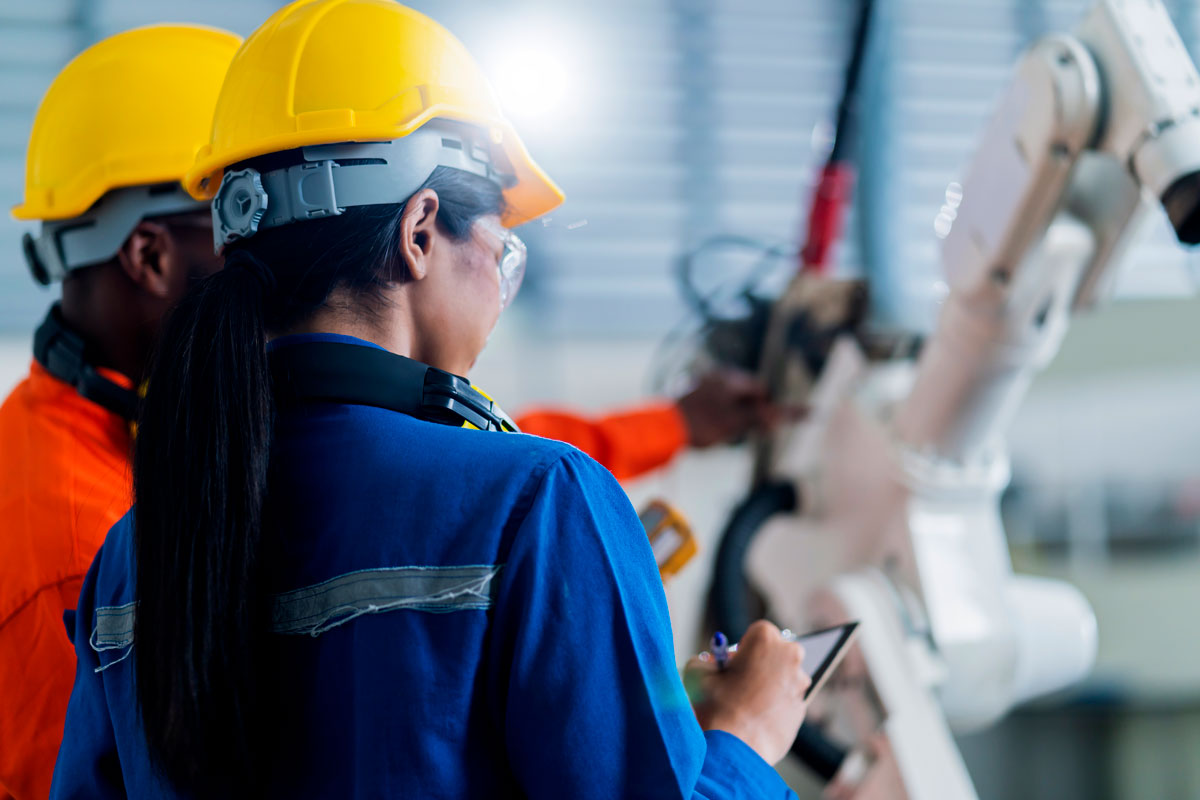Exclusive Neuroject Article: AI in construction can create huge changes and promote innovation and creativity on a wide scale. We can say without exaggeration that this advanced technology guarantees fast and accurate results without exaggerating. Of course, the future of artificial intelligence in this industry is still uncertain. However, the unique capabilities and applications of AI in construction have made it a necessary and advanced technology for any business.
After examining the general concept of artificial intelligence and its importance in the construction industry, in this article, we discuss the various applications of this technology. This was done at all stages of the project. Next, the opportunities and challenges facing artificial intelligence in this industry have been examined.

Before we dive deeper, let’s review artificial intelligence’s answer about itself and its effect on construction:
AI is a technology that enables machines to think, learn, and act independently. It can be used to automate tasks and provide insights to optimize construction processes and projects. AI can also be used to identify potential safety hazards before they occur, improving job site safety. For instance, AI can be applied to detect when workers are not wearing protective gear on a construction site. It can send an alert to the site manager to take corrective action.
According to a recent study, 92% of construction companies said they used or intended to use AI. However, they only had a success rate of 65% – one of the lowest of all industries surveyed.
This suggests that the construction industry is still struggling to effectively utilize AI. Despite the high adoption rate, the industry is yet to reap AI’s full benefits. Companies should focus on improving AI implementation strategies.
Table of Contents
What is AI or Artificial Intelligence?
Artificial intelligence (AI) is a term to describe when a machine imitates a person’s cognitive functions including problem-solving, pattern recognition, learning, etc. This technology is a specialized field based on data science that enables problem-solving by combining computer technology with large amounts of data. Artificial intelligence replicates and imitates human intelligence and performs tasks with speed and accuracy beyond humans. It cannot be hidden that AI can sometimes outperform human insight or decision-making due to the huge amount of data processing capabilities.
Everyone who uses digital services and the Internet has an indirect experience of artificial intelligence. Voice search with Amazon, search engine results based on collecting and retrieving information related to the user’s previous questions, chatting with a robot in the online shopping process, showing suggested videos from YouTube and Netflix, etc., all use artificial intelligence and only it is set for you.
Artificial intelligence is not an original idea and its roots date back to the 1950s. The idea of developing machines equipped with quasi-human intelligence is rooted in several different fields, including philosophy, fiction, imagination, computer science, electronics, engineering inventions, etc. Alan Turing’s intelligence test, a computer science expert and the father of artificial intelligence is considered a turning point in artificial intelligence. Because this test extended beyond traditional theological positions and mathematical conclusions about intelligent machines. Arthur Samuel, one of the pioneers of this field, defined artificial intelligence as a phenomenon that equips computers with the ability to learn without explicit programming.
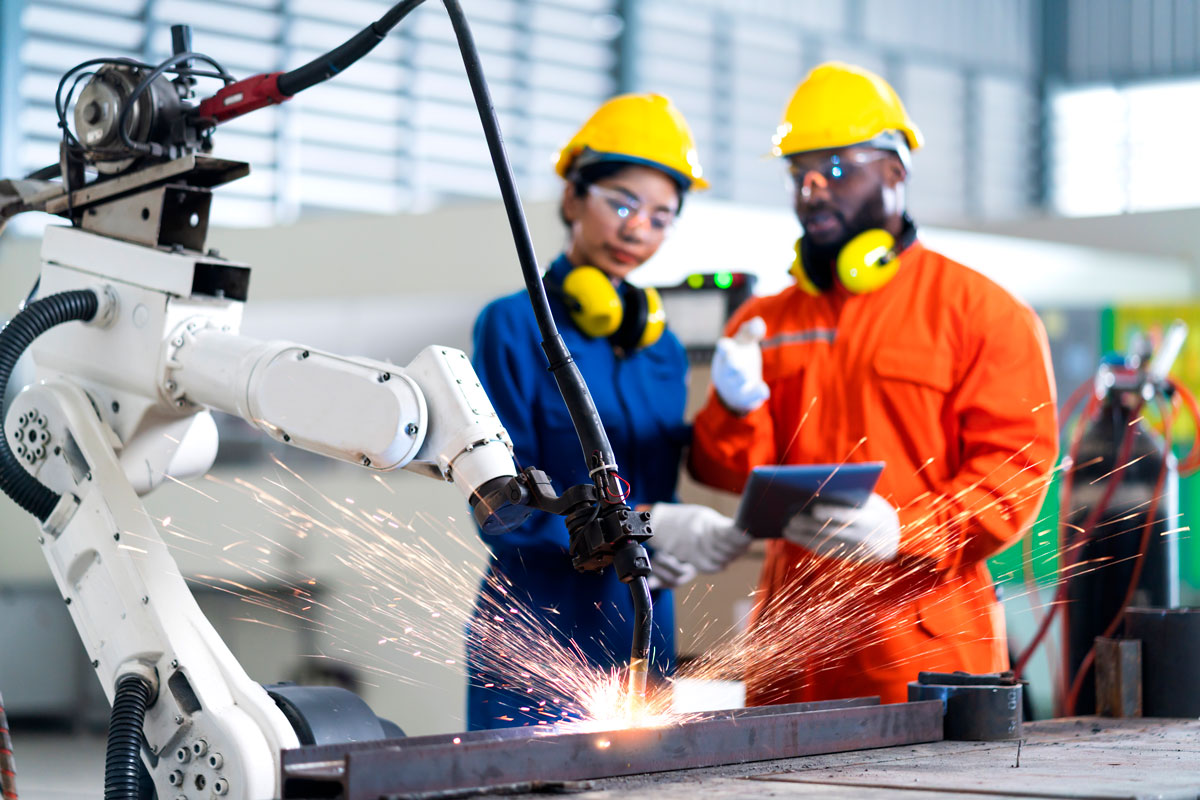
Classification of Artificial Intelligence based on Capabilities
Artificial intelligence tools are classified into three categories based on their nature and capabilities; 1) Artificial narrow intelligence (ANI), 2) Artificial general intelligence (AGI), and 3) Artificial superintelligence (ASI).
Artificial Narrow Intelligence (ANI) Benefits and Risks is a form of artificial intelligence in which machines work in a specific domain such as playing chess, predicting sales, movie recommendations, language translation weather forecasting, etc. Many of the most complex and powerful AI results that amaze humans are classified as weak AI!
Artificial General Intelligence (AGI) is about making machines work at the same level as humans. This category of artificial intelligence tools can solve a wide range of complex problems in different fields. They can also independently control their thoughts, issues, strengths or weaknesses, and needs.
Artificial Superintelligence (ASI) deals with the creation of tools with superhuman intelligence and abilities in several areas. ASI has yet to be fully realized and still appears to be a challenging task to complete.
Subfields of Artificial Intelligence
In general, the development of artificial intelligence applications in the industry has created different fields of artificial intelligence; including machine learning, computer vision, natural language processing, knowledge-based systems, optimization, robotics, automatic planning and scheduling, etc.
Machine Learning
Machine learning is a subset of artificial intelligence that relates to the design and use of computer programs to learn from past experiences or data in order to model, adapt, and improve performance, control, or predict by statistical techniques without explicit programming.
Deep learning uses artificial neural networks to process large amounts of data and solve problems with limited human assistance. AI networks are very valuable because of their ability to manage large and complex data. With the reduction of barriers and limitations and the daily progress of artificial intelligence, we can expect that machine learning and the allocation of resources towards artificial intelligence will play a more significant role in the construction industry in the coming years.
Computer Vision
Computer vision is a multidisciplinary and interdisciplinary field related to the artificial simulation of the human visual system. Computer vision provides a high level of digital and multidimensional image perception by recording images through appropriate devices. The processing and analysis of these images are done through advanced algorithms to facilitate decision-making.

Automatic Programming
Programming is a sub-branch of artificial intelligence that enables intelligent systems to accomplish desired goals or objectives according to a plan. Achieving these goals with artificial intelligence is done by accurately identifying needs and arranging a sequence of actions based on expected results. Planning also includes selecting and prioritizing programs, and allocating time and resources necessary to achieve the desired goals based on the total available resources.
Planning and scheduling techniques are used to solve complex programs tailored to project constraints and user needs. Search techniques, optimization and genetic algorithms are some of the most common artificial intelligence planning and scheduling techniques.
Robotic
Robots are automated electronic devices that perform specialized physical activities in the real world. They interact with the environment using artificial intelligence sensors and actuators. Robotics is an interdisciplinary engineering activity that involves designing, building, operating, and maintaining robots, and other computer-aided actions to mimic human physical actions.
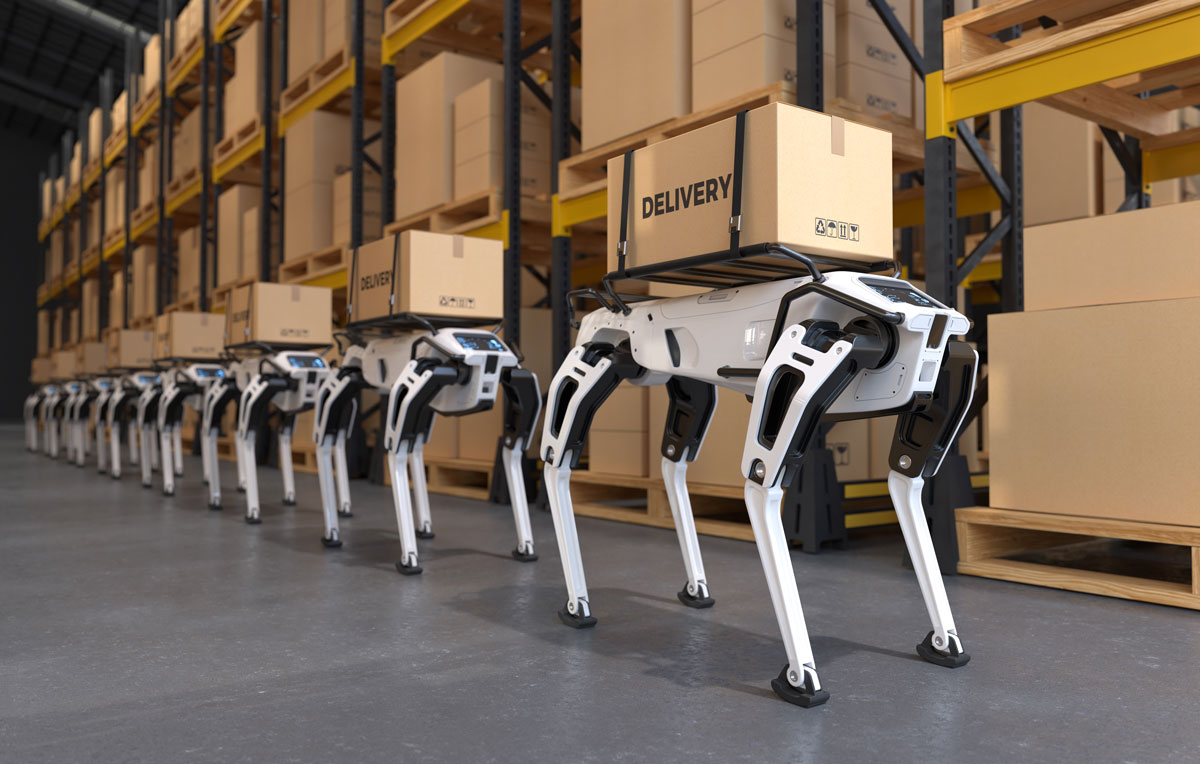
Knowledge-Based Systems
Knowledge-driven systems (KBS) is a subfield of artificial intelligence that deals with machine decision-making based on existing knowledge. Any knowledge-based application consists of a knowledge base, an inference engine, and a user interface for interaction. A knowledge base is created by storing specialized knowledge in relevant domains, past experiences, or other relevant resources.
Its main advantage is increased productivity, easy access, and the application of a wide range of knowledge required for each project. Through inference, this system achieves exploratory, flexible and transparent results. It, if necessary, expresses its logic and inference for the solution it provides for each problem. Database systems are also driven by artificial intelligence and intelligent user interfaces.
Natural Language Processing (NLP)
Natural language processing (NLP) is a subfield of artificial intelligence concerned with creating computational models that mimic humans’ linguistic abilities. NLP works in the fields of machine translation, natural language text processing and summarization, user interfaces, multilingual information retrieval, speech recognition, etc.
Optimization
Optimization is concerned with making decisions or choices to achieve the most effective results given a set of constraints. With the advent of artificial intelligence in the 1950s, an entire family of meta-heuristic algorithms called evolutionary algorithms (EA) was created.
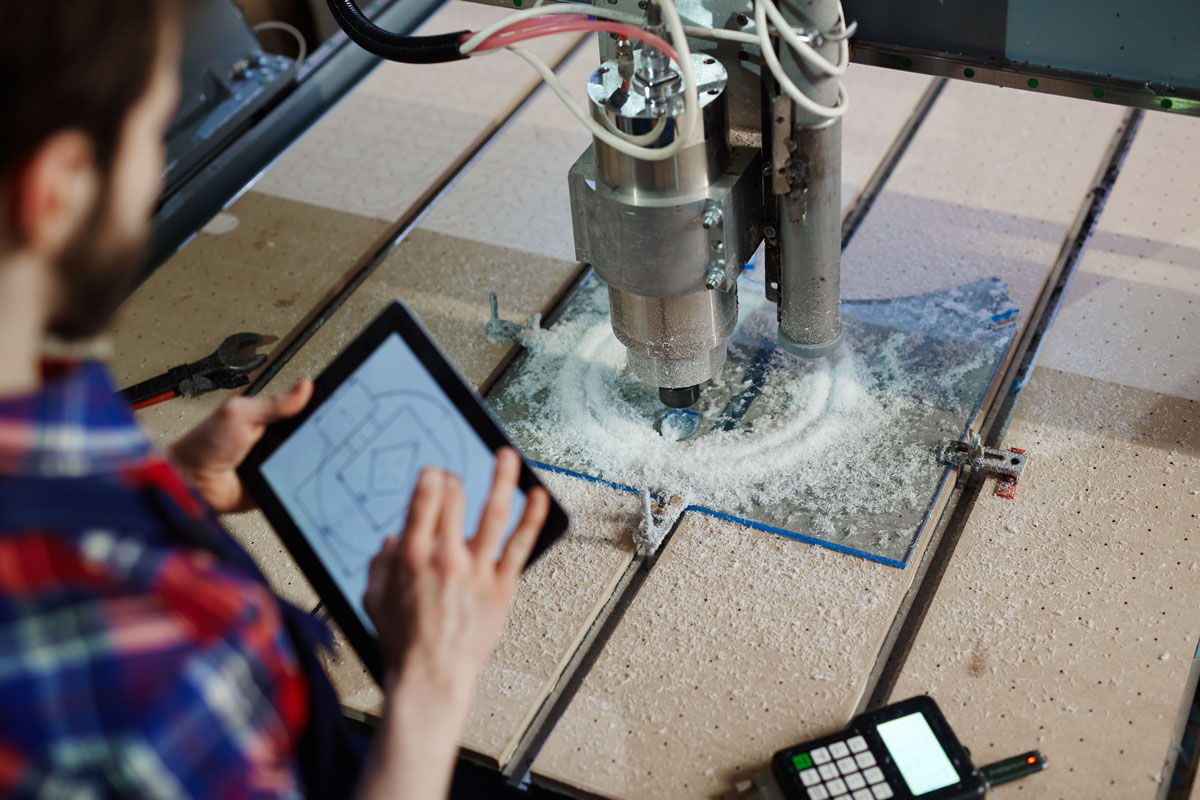
Some of these evolutionary algorithms, including adaptive strategies (ES), adaptive programming (EP), genetic algorithms (GA), differential evolution (DE), and particle swarm optimization (PSO), are used for optimization.
Importance of AI in Construction Industry
Digital technologies and artificial intelligence are used in many fields. The computing power and precise algorithms of artificial intelligence and the vast and complex data of the construction industry are valuable justifications for the necessity of integrating artificial intelligence into this industry. But the construction industry is known for its slow adaptation to evolving technologies. In fact, the construction industry is one of the slowest industries in the world to enter the digital world. It is considered computer science, and most stakeholders acknowledge a long-standing resistance to change.
The lack of digital expertise and the operational nature of the construction industry makes project management more complex. This is why in most architectural projects we face problems such as cost inefficiency, project delivery delays, poor quality performance, uninformed decision-making, and weaknesses in productivity, health and safety systems; Problems that can be solved to a large extent by using artificial intelligence!

“Artificial intelligence will transform the construction industry in the next 10 years more than any other construction technology in the last 100 years.” This statement by James Barrett, the chief executive of an innovation company, emphasizes the importance of adopting digital technologies and artificial intelligence in improving the construction process. With its unique ability to learn, solve problems and recognize patterns at superhuman speed and scale, artificial intelligence is ready to transform building design, construction and operation.
In recent years, experts have concluded that the construction industry must rapidly improve its technological capacities. With labor shortages, Corona pandemics, and stable infrastructure, this issue has become doubly important. Artificial intelligence techniques lead to system automation and better competitive advantages than conventional approaches.
Of course, artificial intelligence does not necessarily work as an isolated tool. If needed, it has the potential to integrate and improve human resources and other digital technologies such as building information modeling and management systems (BIM).
Application of AI in Construction Industry
Artificial intelligence plays a crucial role at all stages of design, implementation, monitoring, etc., in different ways. In the following, we will examine the wide applications of this technology.
Feasibility Studies
One of the most significant measures at all stages of design to project implementation is the feasibility of ideas and plans. Initial conceptual design, planning, project development, etc. Artificial intelligence is used to conduct feasibility studies. Artificial intelligence identifies and presents the risks of each proposed plan by analyzing various data such as financial, climate, performance data, etc.
Proper analysis of plans and identification of possible risks leads to proper decisions regarding project continuation. At this point, artificial intelligence is considered a powerful tool because it examines all aspects of a proposal without bias. It provides a logical answer based on all of its aspects.
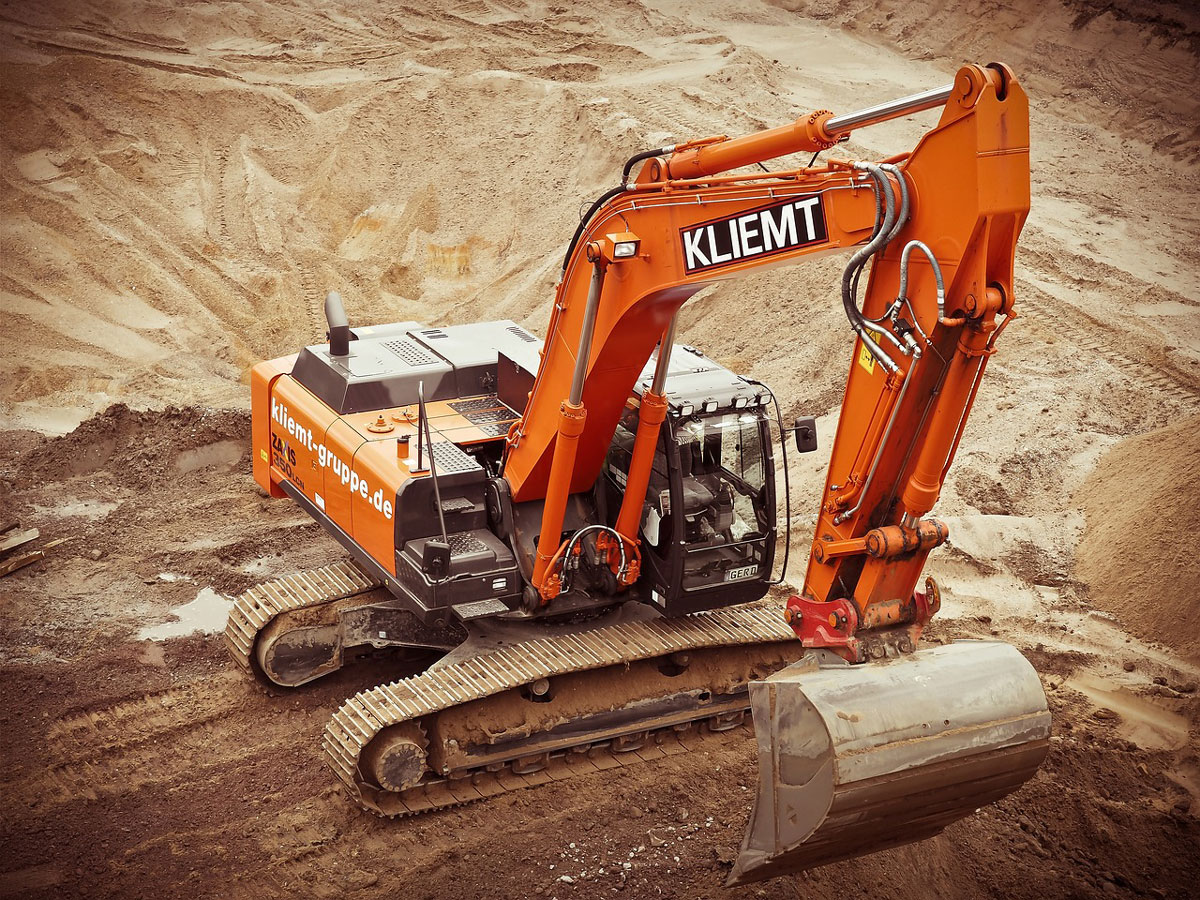
Site Analysis
The design team of each project analyzes the site to identify obstacles, opportunities and threats to the platform. Based on that, it provides a plan to respond to project issues. Artificial intelligence has brought the ability to properly analyze the site and provide optimal design solutions for architects and other project stakeholders.
Today, due to the increasing prevalence of digital sensors, construction sites are becoming smart workplaces. Site analysis includes the generation, collection, storage and analysis of data, aiming to create deep insight into all aspects of the platform. Artificial intelligence tools do this.
At this stage, many data are produced and collected in the form of various content structures such as images, video, text, etc. Content. This data can be stored in the BIM system and analyzed by advanced artificial intelligence techniques. This will optimize site performance in all key areas such as planning, design, safety, scheduling, budget management, etc. This method of analysis improves productivity, quality control, and sets goals and performance.
Mapping the Substrate State with Artificial Intelligence and Drones
The use of artificial intelligence tools at the stage of site collection can significantly reduce the time required for accurate land mapping and recording of aerial images of the substrate.

Drones, geographic information systems (GIS), and geographic artificial intelligence (GeoAI) provide professionals with convenient and easy tracking of project status and site constraints. At the same time, AI tools ultimately lead to smarter decisions and project management.
Suggested article for reading: 7 Lean Construction Principles and Practical Examples
Generative Design
Building Information Modeling (BIM) is an artificial intelligence-based process that provides architectural professionals and engineers in the construction industry with insights into the planning, design, construction and management of projects. 3D models should match all the architectural, engineering, mechanical, electrical and plumbing drawings and the sequence of activities of the respective teams. There should be no conflict between the work scope and team performance. Therefore, artificial intelligence is used in the construction industry to reduce conflict between different teams’ interests through machine learning in the form of artificial intelligence-based productive design.
There is software for this purpose that uses machine learning algorithms to examine all solution variations. It provides different design alternatives. In this way, after the user sets design requirements, the software generates optimal designs to respond to the constraints. Finally, machine learning algorithms and increasing data through repetition lead to the ideal model.

On the other hand, the integration of machine learning and artificial intelligence into the construction process caused architects to switch to a completely redesigned design model. This caused them to enter the digital world. OpenAI launched Point-E, an advanced machine-learning system capable of generating a 3D object based on a simple text message. Although this technology is far from being developed, it is a step forward for the construction industry. This is an industry that always seeks to simplify and facilitate the design and implementation process.
Design Development and Production of Technical Documents
This stage is one of the critical stages in project development. It involves the comprehensive development of design documents to guide the teams to the next stages of the project. Detailed construction and architectural drawings, structures, mechanics, electricity, reporting facilities, etc. are produced to provide accurate and applicable technical documentation of the main concept. This stage includes the compilation of final construction documents such as detailed maps, building specifications reports and contract documents.
The design development phase is where critical decisions are made regarding cost, energy efficiency, and overall building performance. This determines the direction of the design line in the overall design process. Determine the main line of thought and develop the plan in technical documents. This ultimately led to the formation of the final project. Artificial intelligence plays a significant role at this stage by providing enhanced tools and techniques to increase the efficiency and quality of the design and development process.
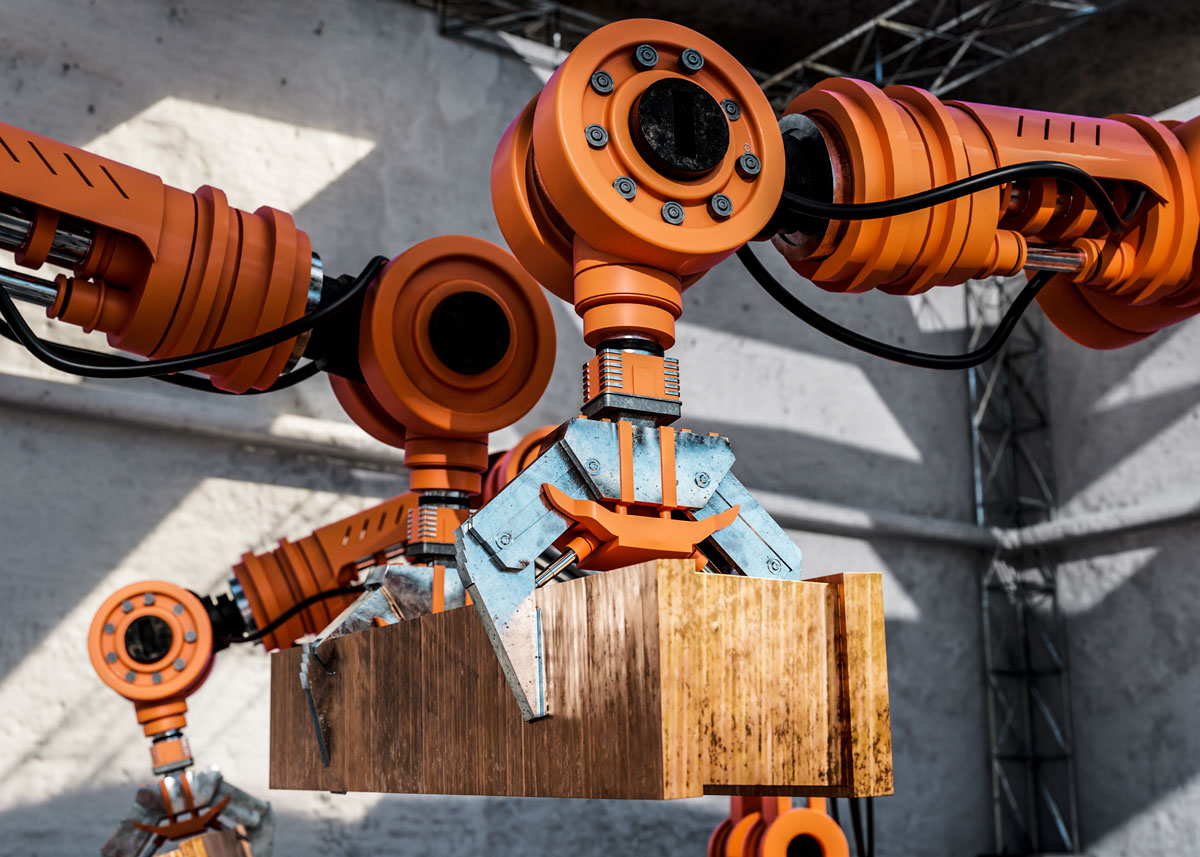
AI-based tools can be used in construction documents to automate data collection, analysis, and processing. For example, using natural language processing (NLP) to analyze project requirements and create a detailed report document based on two-dimensional construction drawings.
Obtaining the Necessary Executive Permits
One of the necessary steps to start construction is obtaining the required permits. This stage includes the submission of construction documents to relevant government agencies for review and approval. At this stage, artificial intelligence is used to confirm the compliance of the plan with construction laws and manage the process of obtaining a building permit.
Completion of the Pre-Construction Stages
This stage includes the finalization of contracts, coordination with project contractors and the start of construction activities. Strategic decision-making and effective planning in the pre-construction phase are key components of architectural project success. Construction contract management and pre-construction stages can be complicated due to the nature of the project, the urgent need for effective interaction and cooperation between teams, etc.
There can often be many consequences to a small mistake in the closing of one of the multiple construction contracts. Consequences include litigation costs, project delivery delays, credit loss, etc. Managing contracts in a traditional and human-based way is often prone to errors and mistakes.

This requires contract management automation with artificial intelligence to increase speed and accuracy in legal processes. With this method, contracts can be searched to retrieve information. A summary and draft contract can be prepared, and clauses prone to disputes can be identified for negotiation and disputing.
Time, budget, etc., are the basic variables of a construction project and should be included in the future planning of the project. AI tools offer a variety of opportunities to properly plan and improve team performance during the pre-construction process based on various variables.
Ensuring Construction Safety
Occupational injuries and fatalities in the construction industry are significantly higher than in other industries. The reason for this is due to the possible risks in the workplace (such as falling from a height, damage caused by collision with construction equipment, work exposed to pollution, etc.). These risks can lead to long-term health problems, disability or even death of project workers.
Loss of credit, reduction in productivity, increase in insurance premiums, lawsuits and costs related to damages payment are among the results of non-compliance with site safety for the employer. Therefore, adopting a preventative approach to predicting potential accidents or risks before they occur is necessary to increase construction safety.
In general, there are seven factors that contribute to construction accidents. These factors include worker actions, risk management, immediate supervision, usability of materials or equipment, local hazards, worker capabilities, and how to manage the project. All these identified factors can be solved by integrating artificial intelligence tools (such as robotics, computer vision, advanced data analysis and optimization techniques) with other digital technologies.
Increasing Safety through Artificial Intelligence
One of the recent applications of artificial intelligence in construction is BIM-based fall hazard identification and prevention in the field of increasing safety. Integrating artificial intelligence technologies based on various sensors with BIM to improve construction safety. Health and Safety Analytics (HSA) uses advanced data analysis techniques to predict and prevent occupational accidents in the workplace. Utilization of these data for active and predictable management also requires advanced artificial intelligence techniques (such as deep learning).

AI-powered cameras and sensors (even tools used by workers) can also scan construction sites for potential safety hazards and alert project workers and contractors to potential hazards. These cameras can control construction quality by identifying defects and giving timely warnings to address issues.
Smart Execution
Today, it is easy to increase construction efficiency through artificial intelligence-based implementation tools. Artificial intelligence and machine learning effectiveness in the field of implementation reaches robotic bricklaying, welding, concrete pouring and even building the entire structure with 3D printing technology. Currently, there are a variety of artificial intelligence-based machines in the construction industry; Like a new mobile robot capable of making 1000 bricks per hour or connecting rebars at a speed of 1100 per hour and…
Autonomous construction machines can perform repetitive tasks more efficiently and faster than human resources. Similarly, automated or semi-automated bulldozers can be used for excavation during the pre-construction phase of the project. These executive tools deliver executive tasks of the highest quality by providing detailed information about how to work. In this way, by reducing the need for manpower in the project implementation phase, the management risks related to performing this series of tasks are also greatly reduced.

Direct Supervision
There are many artificial intelligence methods in construction to increase project safety and productivity. Robots equipped with reality-sensory sensors can scan the scene, perform calculations, and autonomously monitor hazardous construction sites. Also, robots improve efficiency in the project, by providing an accurate and coherent picture of reality, create more transparency in the workplace.
The data collected by these bots is uploaded to a common collaboration platform. In this way, different stakeholders of the project can analyze the construction process and monitor the quality and progress of the project. In dangerous areas of the site, replacing human labor with a robot will ensure the project’s safety. Artificial intelligence can analyze data from building systems, such as HVAC and electrical systems. This is to predict when repairs are needed and prevent equipment failures.
Monitoring the Project Implementation Process Progress
By integrating neural networks and recording images by artificial intelligence in the BIM system, it is possible to keep track of the current status of the project. This is also possible to manage large projects. Construction industry professionals can use AI data to track project progress and identify quality errors at an early stage. A robot equipped with artificial intelligence, like Spot the Dog, can independently scan and monitor the project’s progress every night.
Supervise Fleet Management
Construction companies use the Internet of Things (IoT) features to manage fleets, equipment, and vehicles. They provide solutions such as location awareness, predictive maintenance, fuel and battery consumption using artificial intelligence and Internet of Things. With IoT devices and tags, it is possible to predict the probability of equipment failure. As a result, with this valuable tool of artificial intelligence, it is possible to save time and cost of project construction.
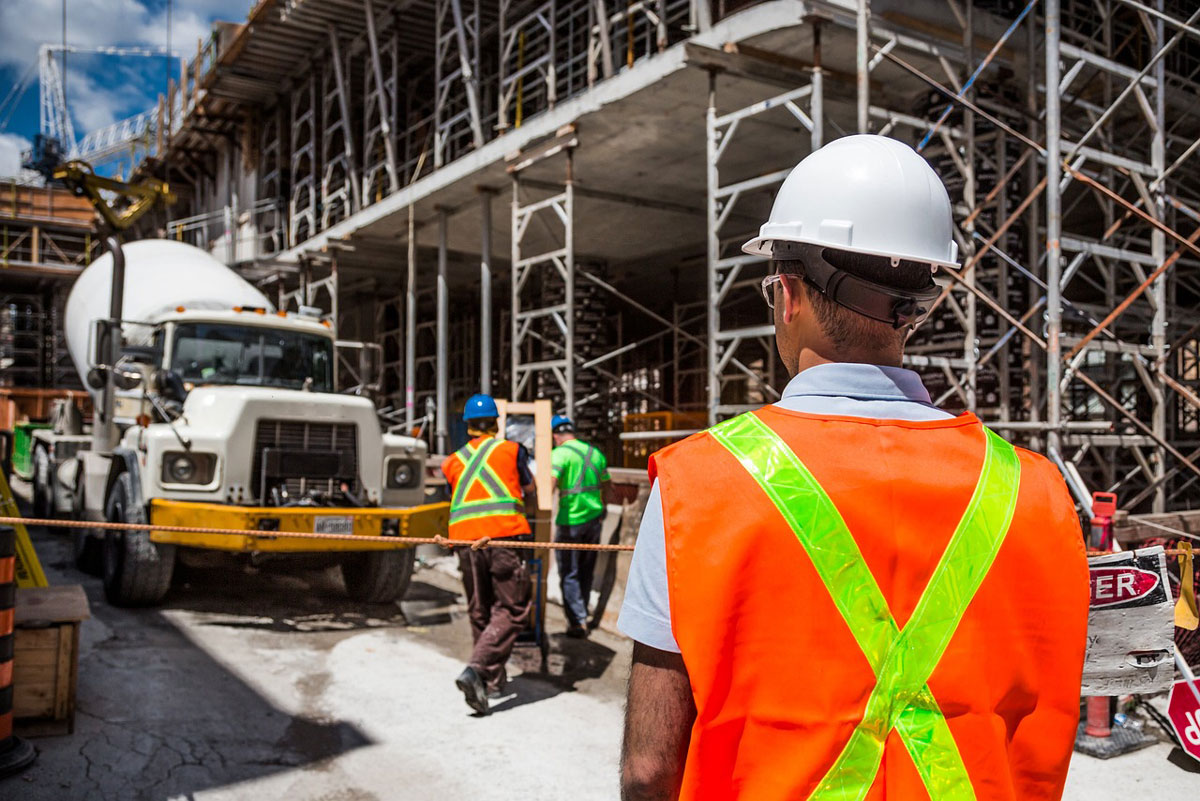
Project Planning and Management
Estimated (forecasting) models based on artificial intelligence in the construction industry are widely used in various fields. These estimation models include an initial forecast of the cost and duration required for construction. This is one of the key factors in project success. Improper project cost and time estimation leads to incorrect project planning and irreparable economic and financial consequences.
BIM is commonly used in the modern construction industry to increase confidence in cost and time estimates. Integrating time and cost with BIM enables more appropriate planning and accurate cost estimation. However, despite the huge benefits of BIM, evidence also suggests that scheduling automation with this method is based only on the information in the model. External subjective factors, additional materials, and resources cannot be ignored in scheduling.
Cost Estimation and Scheduling by Artificial Intelligence
As a result, relying solely on this method of planning still poses challenges. This requires the integration of advanced artificial intelligence techniques (such as deep learning) with BIM to increase cost and time forecast accuracy. As a result, artificial intelligence algorithms can better predict all factors related to the construction field. This can prevent bankruptcy or waste of time, money, and energy. Artificial intelligence can increase efficiency and timing of construction projects by optimizing materials and actions. Therefore, it is considered a very suitable tool for planning and prioritizing things in all phases of the design to implementation process.
Controlling the Site Condition, Architectural Design, and Construction Equipment
After an architectural design is completed, artificial intelligence is likely no longer needed. However, nothing could be further from the truth about artificial intelligence’s abundant use. After construction, architectural design also needs to be operated and maintained to ensure its performance. This is another area where artificial intelligence is flourishing. Project managers and contractors can manage the project even after the artificial intelligence implementation stages are completed.
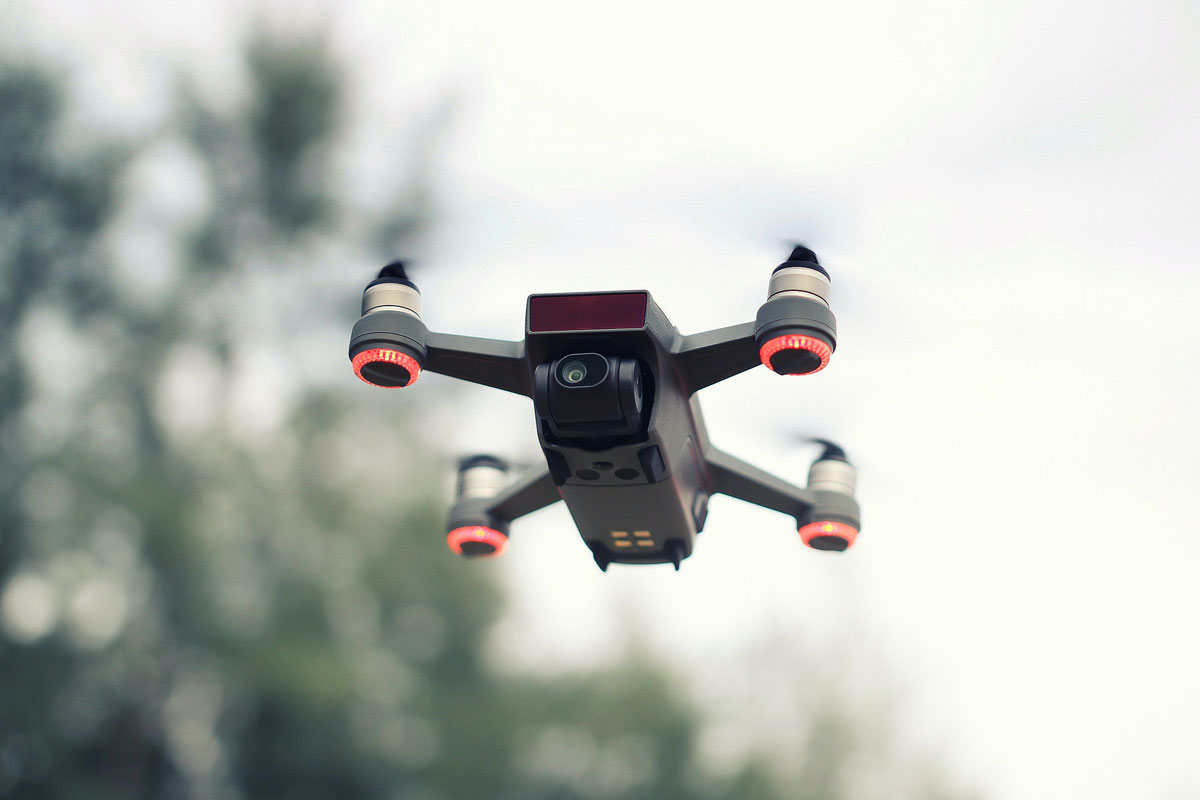 By gathering information about a structure through sensors, drones, and other wireless technologies, advanced analytics, and artificial intelligence-based algorithms can provide valuable insights into a project’s performance. This means artificial intelligence can monitor and prevent potential problems. It can also determine when maintenance is needed, or even guide human behavior for increased safety and security. Artificial intelligence is used in this sector for the status tracking, reporting, and health monitoring of critical equipment, including project infrastructure. This protection is done by using scanning technology to create an exact digital copy of a physical asset. This digital copy is also known as a digital twin.
By gathering information about a structure through sensors, drones, and other wireless technologies, advanced analytics, and artificial intelligence-based algorithms can provide valuable insights into a project’s performance. This means artificial intelligence can monitor and prevent potential problems. It can also determine when maintenance is needed, or even guide human behavior for increased safety and security. Artificial intelligence is used in this sector for the status tracking, reporting, and health monitoring of critical equipment, including project infrastructure. This protection is done by using scanning technology to create an exact digital copy of a physical asset. This digital copy is also known as a digital twin.
Scanning, Tagging, and the Internet of Things
The scan output or dense point cloud is aligned with the physical equipment after registration at this step. In this way, it is possible to periodically check the plan status to identify any shape changes or structural differences, etc. Finally, by running point cloud data through Al, comparing the current state with the initial state of the design, if there is a slight difference between these two states, an alarm will sound.
Tagging and IoT are other widely used technologies to protect and maintain assets. An asset can be accessed by embedding sensors, placing a QR code, and connecting it to a mobile app so that its current condition and repair history can be tracked. Will be displayed. Therefore, artificial intelligence can be used to analyze data, predict and determine the right time for maintenance of any equipment. By scanning and labeling equipment, we can solve technical issues more quickly, improve safety, and reduce cost associated with major repairs.
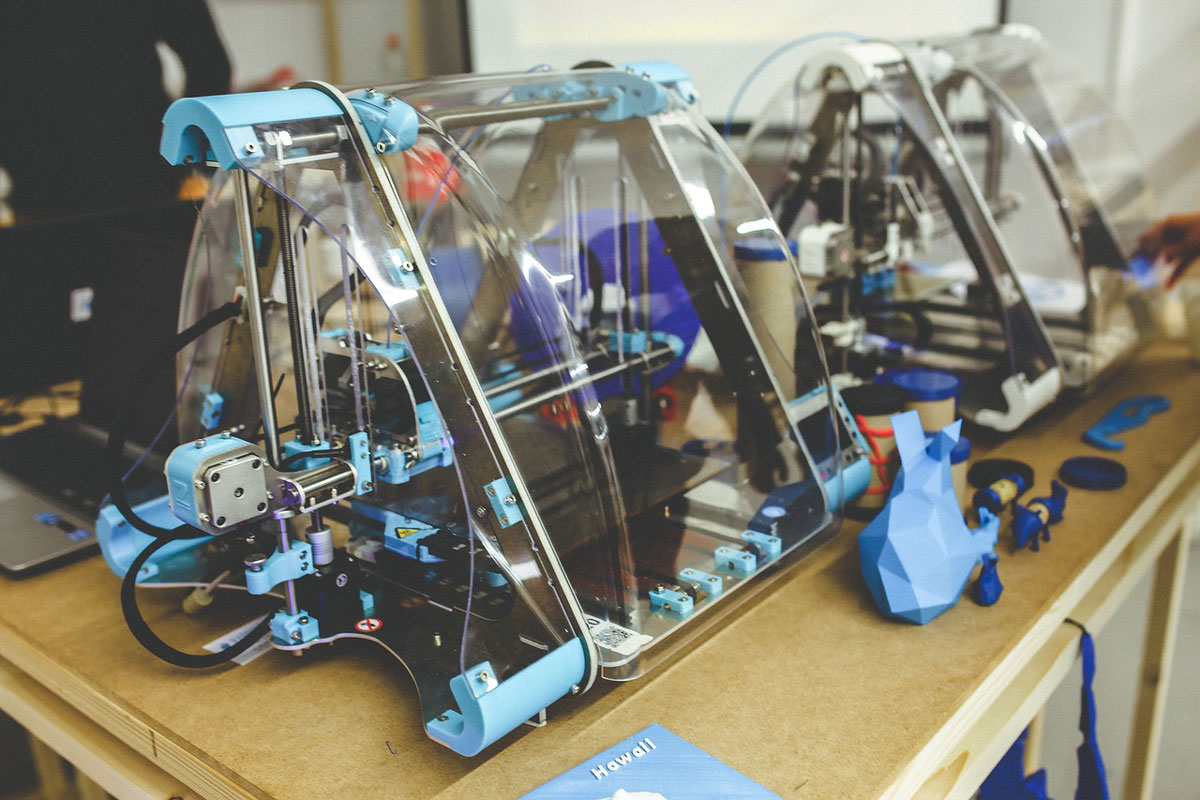
Strengthening the Construction Industry’s Fundamental Knowledge through Big Data
Every day, a lot of data is generated in the construction industry. In such a situation, every construction site is considered a potential data source for artificial intelligence. Thus, today artificial intelligence systems are exposed to a lot of data and improve their performance by learning from it.
All kinds of production data in this industry, including images recorded by smartphones, videos sent from drones, security sensors, building information modeling (BIM), etc., have become a strong information repository for artificial intelligence. In this way, experts and employers of the construction industry can benefit from big data analysis of the construction industry. This is done by using artificial intelligence and machine learning systems.

Improving the Construction Financial Affairs Management System
Despite the huge economic output of the construction industry, bankruptcy rates are still high. This issue is partly related to the difficulty and complexity of budget management and accurate cost estimation in long-term projects. Most construction companies manage multiple projects simultaneously and organize staff and equipment between them. In many cases, due to competitive bidding, a small profit margin is set for each project. Therefore, determining the exact cost estimate is very critical to ensure proper budget management and prevent unexpected costs.
Artificial intelligence is considered a vital part of modern engineering and construction approaches and solves financial challenges. Artificial intelligence can be used in the entire project construction process (design, bidding, funding, financial management, etc.).
Artificial neural networks are used in projects to predict cost overruns based on factors such as project size, type of contract, and skill level of project managers. Time data, such as the assumed start and end date of each project, is used to predict the actual timeline and manage future projects’ finances. By providing the possibility of quick access to the required training and the development of specialized knowledge and skills of employees, artificial intelligence leads to the reduction of the duration of the project, the acceleration of the delivery of the project, and ultimately the reduction of project implementation costs.
“Image 20”
Reducing Labor Shortages
Due to hard physical conditions and risks involved in this industry, there is always a shortage of labor in the construction industry. In such a scenario, robots equipped with artificial intelligence, by monitoring the condition of the site and the resources required by several sites, will lead to the correct management of manpower and the appropriate distribution of construction tools. As a result, based on time requirements and AI detection, the workforce can be transferred to another part of the project. Construction companies can increase labor productivity by 50% through real-time data analysis.
Building Performance Optimization
Artificial intelligence can analyze data from building systems to optimize building performance. This will increase energy efficiency, indoor air quality, and other climate performance metrics. For example, simulating building efficiency with artificial intelligence identifies energy-deprived areas for better design and construction.
Optimizing Resources and Reducing Waste
Due to the continuous and rapid development of the construction industry, an increasing amount of construction and demolition waste (C&DW) is generated every year. Construction activities adversely affect the environment, as well as human resources globally. By making a paradigm shift in smart waste management and using proactive data-driven approaches, i.e. Waste Analytics (WA), steps can be taken to reduce this category of waste.
BIM is used as a virtual, low-cost, and computational environment to activate the design method to reduce waste. The analysis of waste generated depends on a variety of data from different sources such as building design, material properties and construction strategies. These data enable high-performance computing and real-time processing for professionals in this field.
Advanced data analysis techniques are required to obtain waste minimization information. This requires the adoption of artificial intelligence techniques for effective waste management and, in particular, the integration of advanced artificial intelligence techniques with BIM for design optimization, appropriate selection of materials with the aim of reusing and recycling materials, appropriate purchase cost, design flexibility, etc.
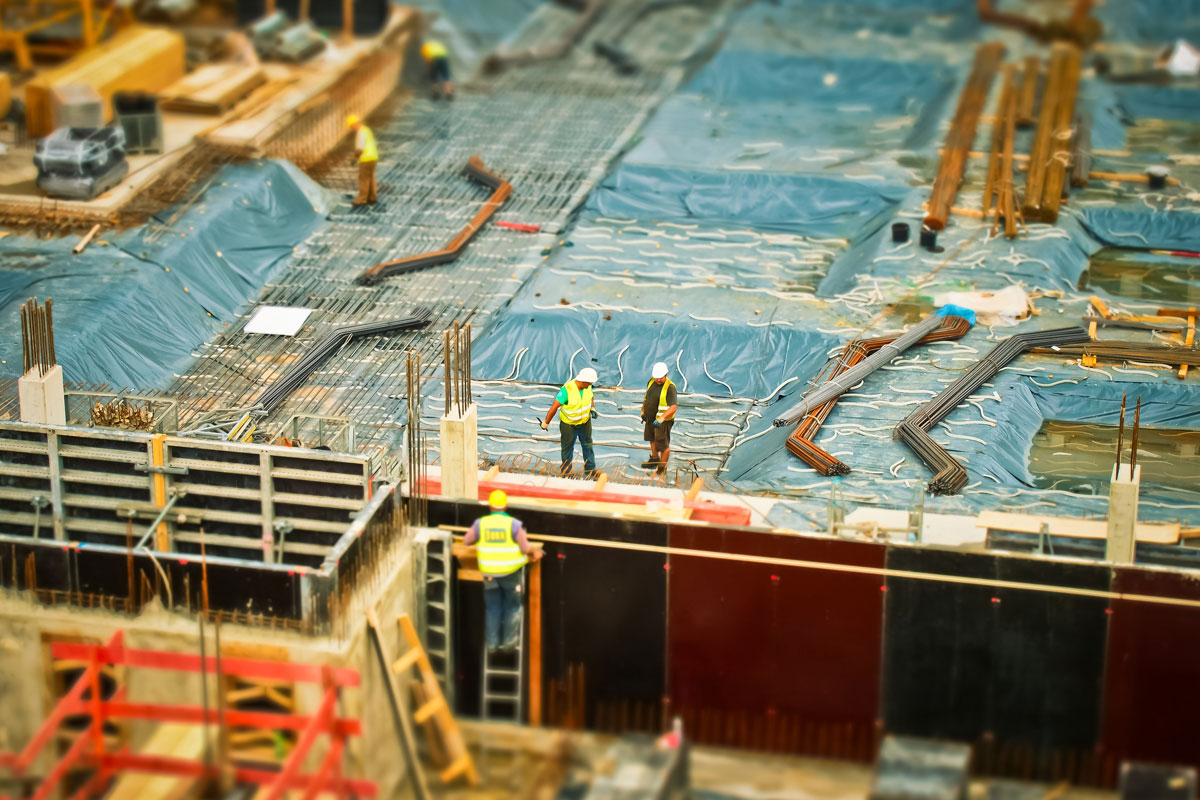
Creating Audio User Interfaces
The busy nature and glut of visual data in the construction industry make Voice-Enabled User Interfaces (VUI) a viable alternative to the common state of communication between construction devices. Construction workers and agents often have to type to communicate with software programs on the construction site. However, typing to retrieve information can lead to safety hazards. This has caused other methods of communication with digital tools such as speech to be considered. With the increasing popularity of user interfaces with speech capabilities, tools equipped with this capability are used as automatic assistants.
Of course, the results of the studies conducted on the place of speech in construction indicate the existence of challenges in how to use this tool in the construction industry. One of these main challenges is noise pollution on the project site. These contaminations lead to the entry of unwanted information into the speech signal and create the possibility of errors in audio transmission.
Other challenges include speaker diversity, audio enhancement, data amount, and search space. Solving these challenges could lead to VUI integration in the construction industry. The development of an advanced dataset of common voice commands in different site situations overcomes the challenges of this tool.

Challenges and Limitations
While the integration of Artificial Intelligence (AI) holds immense promise for revolutionizing the construction industry, it is not without its set of challenges and limitations. Addressing these hurdles is crucial for realizing the full potential of AI in construction. Here are some key challenges and limitations:
Resistance to Change
Challenge: The construction industry has traditionally been resistant to adopting new technologies, and AI is no exception. There may be a reluctance among stakeholders to embrace AI-driven solutions due to a lack of familiarity or apprehension about job displacement.
Solution: Industry-wide education and awareness programs are essential to demystify AI and highlight its potential benefits. Demonstrating successful case studies and the positive impact on efficiency and outcomes can help alleviate resistance.
Data Quality and Availability
Challenge: AI algorithms heavily depend on high-quality and abundant data. The construction industry, however, often faces challenges with data quality, consistency, and accessibility.
Solution: Implementing robust data collection and management processes is imperative. Investing in technologies that enable real-time data capture, storage, and analysis will enhance the reliability and usefulness of AI applications.
Cost of Implementation
Challenge: Integrating AI technologies can be financially demanding, especially for smaller construction firms. The initial costs associated with acquiring and implementing AI systems might act as a barrier to entry.
Solution: Governments, industry associations, and technology providers can collaborate to develop cost-effective AI solutions tailored to the needs of smaller businesses. Incentives, grants, or subsidies may further encourage widespread adoption.
Lack of Skilled Workforce
Challenge: The successful implementation of AI requires a skilled workforce capable of understanding, managing, and maintaining AI systems. The shortage of professionals with expertise in both construction and AI is a limiting factor.
Solution: Educational institutions and training programs should adapt to the evolving needs of the industry. Encouraging interdisciplinary education and providing opportunities for upskilling can bridge the gap in the workforce.
Ethical Concerns
Challenge: AI applications in construction, particularly in decision-making processes, raise ethical concerns. Issues related to bias, transparency, and accountability need careful consideration.
Solution: Establishing ethical guidelines and standards for AI in construction is essential. Transparent algorithms, regular audits, and ongoing discussions within the industry can help address these concerns and build trust.
Interoperability Issues
Challenge: The construction ecosystem involves various stakeholders, each using different tools and technologies. Ensuring seamless integration and interoperability of AI systems with existing platforms can be challenging.
Solution: Industry-wide standards for data formats and communication protocols can facilitate interoperability. Collaboration between technology providers to create integrated solutions will enhance the overall efficiency of AI implementation.
Data Security and Privacy
Challenge: Construction projects involve sensitive data, and the use of AI raises concerns about data security and privacy breaches.
Solution: Implementing robust cybersecurity measures, encryption protocols, and compliance with data protection regulations are vital. Clear communication regarding data usage and adherence to privacy standards can build trust among stakeholders.
Scalability Issues
Challenge: Adapting AI solutions to projects of varying scales can be challenging. Some AI systems may perform exceptionally well in large projects but struggle to scale down effectively.
Solution: Developers should design AI solutions with scalability in mind. Customizable AI applications that can be tailored to the specific needs and sizes of construction projects will enhance their adaptability.
Addressing these challenges requires a concerted effort from industry leaders, technology providers, and policymakers. As the construction sector navigates the path to a digitally transformed future, overcoming these challenges will be pivotal in unlocking the true potential of AI.
Implementation Strategies for Construction Companies
The integration of Artificial Intelligence (AI) into construction processes holds immense potential for improving efficiency, reducing costs, and enhancing overall project outcomes. To successfully implement AI in construction, companies can adopt the following strategies:
Educate and Train the Workforce
Education Programs: Provide comprehensive training programs for construction professionals at all levels. This should cover both the basics of AI and specific applications relevant to construction processes.
Skill Development: Invest in upskilling the workforce to ensure they are proficient in utilizing AI tools and understanding the insights generated by these systems.
Start with Pilot Projects
Identify Low-Risk Projects: Begin the AI implementation journey with smaller, less complex projects. This allows for testing and fine-tuning AI applications in a controlled environment.
Evaluate Performance: Assess the performance of AI systems during pilot projects and gather feedback from on-site teams. Use this information to make necessary adjustments and improvements.
Collaborate with Tech Providers
Partnerships: Form strategic partnerships with technology providers specializing in construction-focused AI solutions. Collaborate with these providers to customize AI tools according to specific project requirements.
Continuous Support: Ensure ongoing collaboration for updates, maintenance, and troubleshooting. A strong partnership can contribute to the long-term success of AI implementation.
Establish Clear Objectives
Define Goals and Metrics: Clearly outline the objectives of integrating AI, such as improving project timelines, reducing costs, or enhancing safety. Establish measurable metrics to track the success of AI implementation.
Align with Business Strategy: Ensure that AI implementation aligns with the broader business strategy and contributes to the company’s long-term goals.
Invest in Data Infrastructure
Data Collection Systems: Implement robust systems for collecting and managing project data. Ensure that data is accurate, consistent, and easily accessible for AI algorithms.
Cloud-Based Solutions: Explore cloud-based platforms for efficient storage, processing, and sharing of construction data. This facilitates real-time collaboration and analysis.
Address Regulatory Compliance
Understand Regulations: Stay informed about industry-specific regulations and standards related to AI in construction. Ensure that AI applications comply with data protection and privacy laws.
Ethical Guidelines: Develop internal ethical guidelines for the responsible use of AI, addressing issues such as bias, transparency, and accountability.
Encourage Innovation Culture
Promote Innovation: Foster a culture of innovation within the company. Encourage employees to explore and propose novel ways to integrate AI into construction processes.
Reward Initiatives: Recognize and reward employees for innovative contributions and successful implementation of AI solutions.
Scale Gradually
Expand Step by Step: After successful pilot projects, gradually expand the use of AI to larger and more complex endeavors. Scaling incrementally allows for better management and understanding of AI’s impact.
Feedback Loop: Establish a continuous feedback loop with project teams to address any challenges that arise during the scaling process.
Measure and Iterate
Performance Monitoring: Implement systems to continuously monitor the performance of AI applications. Use analytics to measure the impact on project outcomes and identify areas for improvement.
Iterative Improvement: Based on performance metrics and feedback, iterate on AI implementations to enhance their effectiveness over time.
Cultivate Change Management
Communication: Communicate transparently with employees about the benefits of AI adoption. Address concerns and highlight how AI can augment, rather than replace, human capabilities.
Change Management Teams: Establish dedicated change management teams to facilitate a smooth transition and provide ongoing support to employees adapting to AI-driven processes.
By following these strategies, construction companies can navigate the complexities of AI implementation, maximize the benefits of technology, and position themselves as leaders in the digitized future of the construction industry.
Resources:
constructconnect | constructible.trimble | azobuild | constructiondive | forbes | appinventiv | Journal of Building Engineering |
For all the pictures: freepik | Pexels | pixabay


